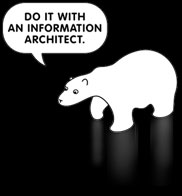30. Dezember 2014
27. Dezember 2014
26. Dezember 2014
25. Dezember 2014
24. Dezember 2014
22. Dezember 2014
20. Dezember 2014
18. Dezember 2014
16. Dezember 2014
15. Dezember 2014
14. Dezember 2014
13. Dezember 2014
11. Dezember 2014
9. Dezember 2014
6. Dezember 2014
5. Dezember 2014
3. Dezember 2014
30. November 2014
The Big Design Renaissance is Over (Jan Jursa)
Google books Ngram Viewer: the big design renaissance is over. http://t.co/Sds4Mb4GM2 (http://t.co/pRykNAbzuv) What do you think? #design
— Jan Jursa (@IATV) 30. November 2014
29. November 2014
28. November 2014
27. November 2014
26. November 2014
25. November 2014
24. November 2014
#BlackFriday #CyberMonday UX & Usability SUPER Discount from Udemy!
You know, I told you already about some great Udemy Black Friday discounts.
Sure there are nice free Udemy courses as well. Take a look at this one for example (Introduction to Graphic Design). But if you are into Usability, User Experience and Interaction Design there is one man you simply have to know: Dr. David Travis.
David Travis has authored and recorded the following fantastic Udemy courses:
- Usability Testing Boot Camp
- How to carry out a usability expert review
- User Experience: The Ultimate Guide to Usability
Great BlackFriday Usability Discount
And here come the good news: Dr. David Travis is offering big discounts on his courses until BlackFriday (midnight, I guess).- User Experience: The Ultimate Guide to Usability (1 course). In this offer, you'll receive Dr. David Travis' bestselling user experience course for $49 (normally $199). Promotion ends Friday, Nov 28, so don't delay!
- Usability Testing Bootcamp & Usability Expert Reviews (2 courses) Bundle. In this bundle, you'll receive two of Dr. David Travis' in-depth courses "Usability Testing Boot Camp" & "How to Carry out a Usability Expert Review" for $49 (normally $198). Promotion ends Friday, Nov 28, so don't delay!
- User Experience: The Ultimate Guide to Usability, Usability Testing Bootcamp & Usability Expert Reviews (3 courses) Bundle. In this bundle, you'll receive all of Dr. David Travis' courses: "User Experience: The Ultimate Guide to Usability", "Usability Testing Boot Camp" & "How to Carry out a Usability Expert Review" for $59 (normally $397)! Promotion ends Friday, Nov 28, so don't delay!
23. November 2014
FREE Udemy course: Introduction to Graphic Design
This Udemy course is totally awesome and it's completely free: Introduction to Graphic Design.
Learn the basics of design theory to become a real graphic design master. Design goes way beyond software and there is a lot of theory behind it. In this introductory course, you'll learn the basics needed to create amazing and real design.
Here is what people think who have taken the course:
Introduction to Graphic Design is very interesting, worthwhile and free. Give it a try!
22. November 2014
21. November 2014
20. November 2014
Udemy Black Friday DEALS. Save BIG!
The Race To Black Friday Is On - Get the Lowest Prices Today. Hurry! Prices increase every day at midnight PST until 11/28.

For example you could take a look at:





Use coupon code bfriday14 to get big discounts until BLACK FRIDAY (midnight 11/28). Some exclusions apply. Coupon code expires 11:59PM PST, November 28, 2014.
17. November 2014
15. November 2014
13. November 2014
11. November 2014
9. November 2014
5. November 2014
1. November 2014
29. Oktober 2014
28. Oktober 2014
25. Oktober 2014
24. Oktober 2014
21. Oktober 2014
4. Oktober 2014
2. Oktober 2014
1. Oktober 2014
29. September 2014
28. September 2014
27. September 2014
26. September 2014
25. September 2014
24. September 2014
22. September 2014
21. September 2014
20. September 2014
17. September 2014
14. September 2014
7. September 2014
6. September 2014
Mobile UX Summit 2014 (Sept 13). SAVE 50 Euro!
MOBX the Mobile UX Summit 2014 takes place September 13 in Berlin. MOBX is your premier annual conference for Mobile User Experience, small screen Interaction Design and usable interfaces on smart devices.
SAVE 50 Euro with promotion code usabilityberlin and get your tickets now.
2. September 2014
29. August 2014
SAVE $189 The Complete Web Developer Course
The Complete Web Developer Course
SAVE $189

Ends very soon (today!): The Complete Web Developer Course - Build 14 Websites. Web development from scratch in 6 weeks. HTML, JS, CSS, PHP, MySQL, Bootstrap, Wordpress, APIs, Mobile Apps all covered.
Anyone Can Learn How to Code
Learning web development with this course means you will quickly dive into learning how to code, design, and build powerful and functional websites.
After going through all 11 chapters, you'll have the tools to construct professional sites using intricate data management and slick interfaces.






















